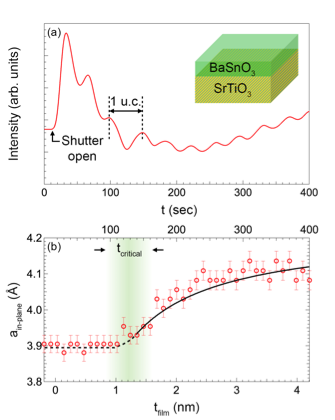Perovskite heterostructures exhibit unprecedented optical, thermal, piezoelectric, and mechanical properties, making them promising candidates for applications in spintronics, ferroelectrics, thermoelectrics, and piezoelectrics. Such extraordinary properties of perovskites are extremely sensitive to stoichiometric composition, structural defects, interface properties, and external stimuli. Thus, understanding the structure-property correlation is crucial to advance the applications of this important class of materials. The objective of the proposed work is to continue exploring the use of ultrafast thermal characterization (TDTR) to identify the presence and impact of structural defects in perovskite materials. Jalan has grown thin films of BaSnO3 with controlled concentration of intrinsic (cation/anion vacancy) and extrinsic defects (doping/alloying) using a hybrid molecular beam epitaxy approach. A representative time dependent reflection high-energy electron diffraction oscillations of a stoichiometric BaSnO3 film (Figure 1) demonstrates the atomic layer control over film thickness along with the onset of strain relaxation [1]. Preliminary thermal characterization taken by Wang using TDTR yield a thermal conductivity of 13 W/m-K for the stoichiometric BaSnO3 film, and ~1.9 W/m-K for the non-stoichiometric film. Additional measurements will be conducted at different temperatures, which allow for establishing the correlation between the sample structural defects and its thermal conductivity through the defect-phonon scattering.
[1] A. Prakash, J. Dewey, H. Yun, J. S. Jeong, K. A. Mkhoyan and B. Jalan, “Hybrid molecular beam epitaxy growth for stoichiometric BaSnO3”, J. Vac. Sci. Technol. A 33, 060608 (2015).

(a) Time-dependent RHEED intensity oscillations for BaSnO3 grown on SrTiO3 substrate. Inset shows the schematic of the structure. (b) In-plane lattice parameter of the film determined using in-situ RHEED as a function of growth time indicating the onset of strain relaxation. [1]
UMN MRSEC
435 Amundson Hall, 421 Washington Ave. SE, Minneapolis, MN, 55455
P: 612-626-0713 | F: 612-626-7805